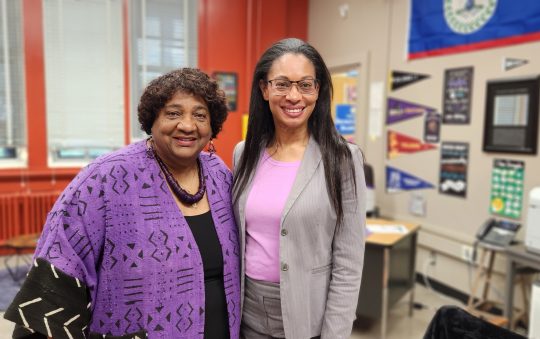
Los Angeles County was officially in the less- restrictive orange tier of the state’s COVID-19 business-reopening blueprint today — but it will wait until Monday before easing economic restrictions, and some rules will be stricter than state guidelines.
The move to orange means more capacity at retail stores, movie theaters, restaurants and other attractions, along with an array of other adjustments, including the reopening — outdoors only — of bars that don’t serve food.
County Public Health Director Barbara Ferrer said that even though the county has officially moved into the orange tier, it will maintain more restrictive red-tier-level rules until 12:01 a.m. Monday.“This allows the county to follow the state guidelines and wait until we’ve completed three weeks in the red tier to be sure that our case
numbers do not rise this third week since our earlier reopenings,” Ferrer said.
The state’s Blueprint for a Safer Economy normally requires counties to remain in a tier for at least three weeks before advancing to a less-restrictive level, but it inexplicably waived that requirement for both Los Angeles and Orange counties, allowing both to move to the orange tier on Wednesday. Unlike Los Angeles, Orange County plans to implement orange-tier guidelines on Wednesday.
Moving to the orange tier requires a county to have an average daily rate of new COVID infections of 3.9 per 100,000 residents, along with a testing-positivity rate of 4.9% or less, and maintain those levels for two consecutive weeks.
According to weekly figures released by the state Tuesday, Los Angeles had a new case rate of 3.1 per 100,000 residents, and a testing-positivity rate of 1.5%. Both numbers were down from last week, when the county’s case rate was 3.7 per 100,000 residents, and the testing-positivity rate of 1.8%.
Ferrer said a revised Health Officer Order will be posted on Friday so business owners will be aware of all the new guidelines and have the weekend to adjust their operations accordingly. While the county is largely aligning with state guidelines for the orange tier, it will have some stricter requirements.
Most notably, bars will be limited to outdoor table service only, operating only from 11:30 a.m. to 10 p.m., with a required 8-foot distance between outdoor tables.
Although state guidelines allow lifting of all capacity restrictions on retail establishments in the orange tier, Los Angeles County will impose a 75% limit for grocery stores and other retail operations, while “strongly” recommending they remain at 50% capacity until April 15 to allow time for more workers to get vaccinated.
In accordance with state guidelines, the county will raise the capacity limit from 25% to 50% for movie theaters, churches, museums, zoos, aquariums and restaurants.
Fitness center capacity will be increased from 10% to 25%. Card rooms and family entertainment centers can resume indoor operations at 25% capacity. The move also allows Dodger Stadium to increase fan capacity to 33%, up from the current 20%, while theme parks can expand capacity to 25%, up from 15%.
Breweries and wineries will be able to offer indoor service at 25% capacity. Breweries, wineries and bars will all be allowed to turn on their television sets outdoors, but live entertainment remains prohibited.
It was unclear if the county will continue to ban restaurants from turning on their television sets — a requirement imposed to prevent gatherings of sports fans.
The city of Long Beach, which has its own health department, parted ways with the county and immediately moved to orange-tier rules on Wednesday. The city generally aligned with the state’s guidelines, including the elimination of capacity limits at retail stores.
The city of Pasadena, which also has its own health department, plans to follow the county’s lead and wait until Monday before changing its restrictions. Despite the move to the orange tier, health officials are continuing to preach vigilance, warning that cases have been rising in other states and countries.
They said the continued emergence of COVID-19 variants that can spread more easily from person to person could lead to another surge in cases. County officials also fear that upcoming spring break activities –along with the Easter and Passover holidays — could prompt gatherings that threaten to quickly spread the virus.
“COVID-19 cases are rising in 27 states, and the U.S. seven-day average saw a 10% increase in cases compared to the prior seven-day period,” Ferrer said. “While L.A. County has yet to experience such increases, this week is critical as we are now two weeks out from when we moved into the red tier and reopened several sectors. We’re also in the height of spring vacations and we’re in the height of many of our spring holidays.”
Vaccine eligibility will expand Thursday to all residents aged 50 and over, but with vaccine supplies still relatively limited, getting an appointment could prove difficult.
The city of Los Angeles’ appointment system through Carbon Health was accepting appointment slots for the 50-and-over group, but the state’s MyTurn website will not offer such appointments until Wednesday, Ferrer said. Eligibility will expand to everyone aged 16 and up on April 15.
The county this week was set to receive its largest weekly allotment of vaccine to date — 338,100 doses — and tens of thousands more doses will be sent directly to other local vaccination providers, such as pharmacies and
health care centers.
Noting that case totals are still low due to reporting delays from theweekend and Cesar Chavez holiday, the county on Tuesday reported 26 new COVID-19 deaths, while Long Beach reported one, lifting the countywide total from throughout the pandemic to 23,111.
The county also announced 386 new infections, while Long Beach added70 and Pasadena reported one, raising the cumulative number since the pandemic began to 1,219,029. According to state figures, there were 638 people hospitalized in the county due to COVID-19, with 158 people in intensive care. That’s down slightly from Monday, when 649 people were hospitalized.






